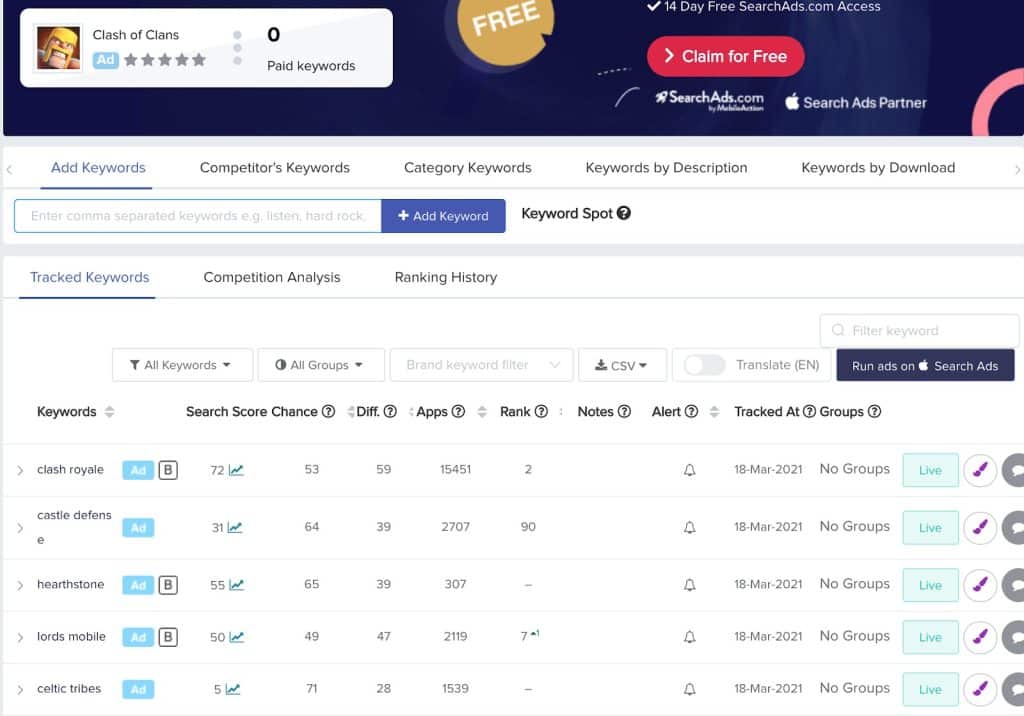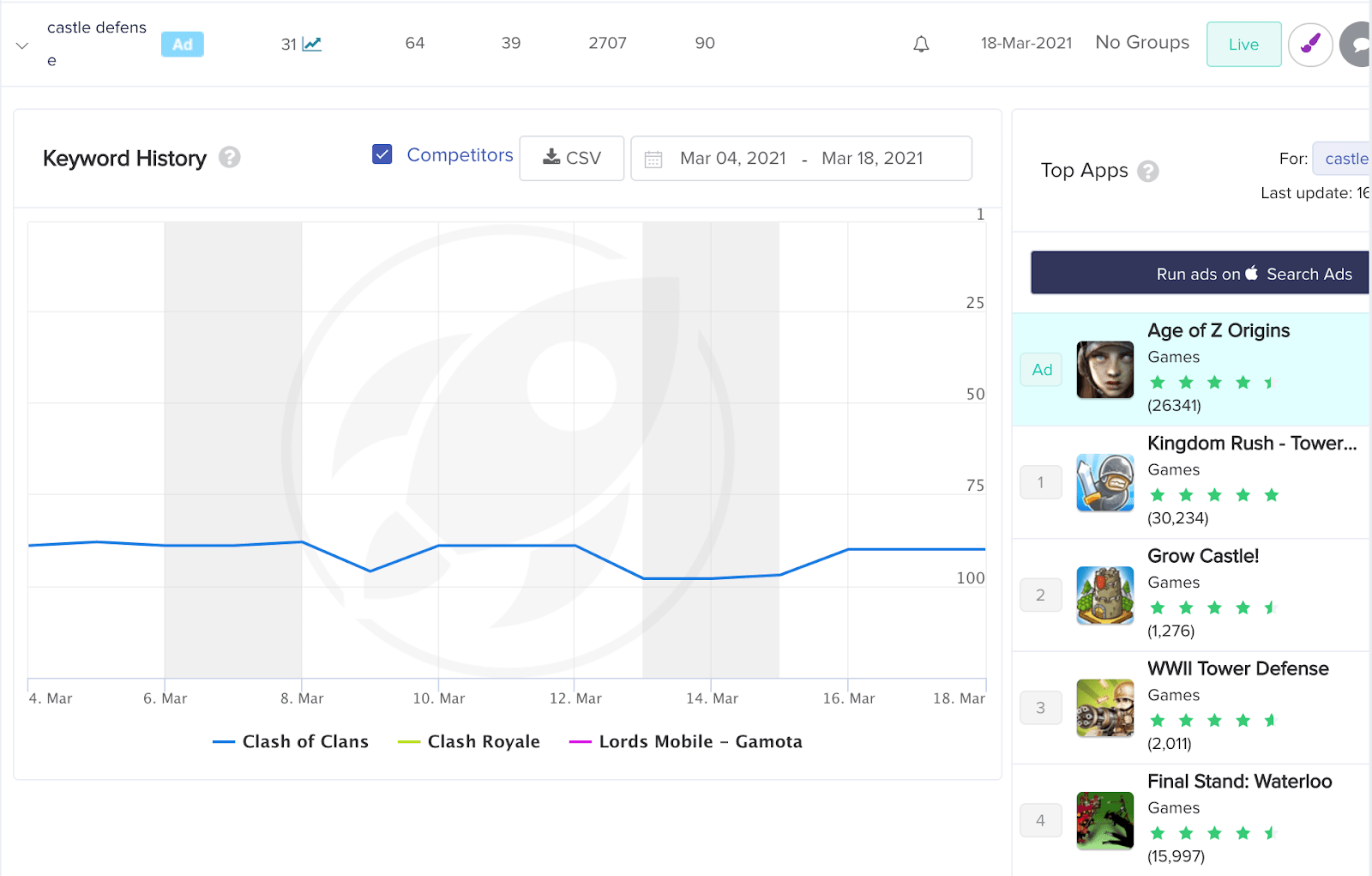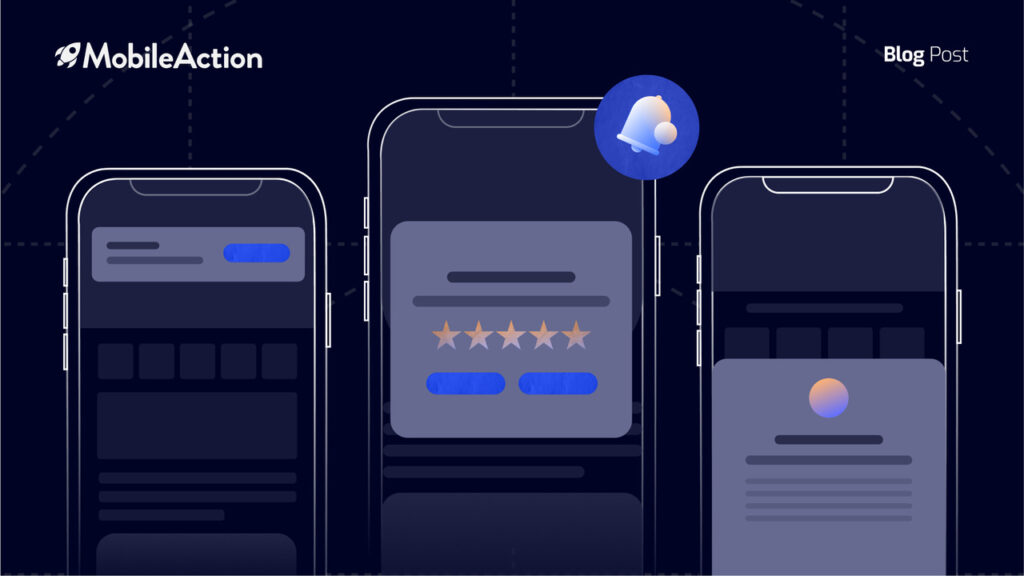
Between implementing a variety of ASO strategies, researching your app competitors, and of course actually coding and developing, there’s a lot to consider when getting an app ready for production.
Don’t let your momentum slow once you’ve actually launched your app. Tracking key metrics about your app is a crucial part of your strategy to ensure that your app doesn’t just start strong, but has continued success over the long-term.
Gaining insight based on solid data will allow you to react, refine, and adjust in a more informed and intelligent way, and that spells success for your app.
The 6 ASO Performance Metrics
This post covers all the key ASO metrics for your app that you should be tracking right out of the gate:
App metrics consist of: Volume, Chance, The Number of Competing Apps, Visibility Score, Keyword Ranking, and Keyword Relevancy. (And if you don’t track them yet, start now!)
To gain access to these mobile app metrics, sign up for a demo. Keep reading to find out what each means and how to use the data to reach your audience and get more downloads.
Volume

Volume, viewable next to each keyword you’re tracking on your Dashboard, is one of the most important when it comes to your app’s ASO strategy, but it’s also an easy one to misinterpret.
The Volume measures the popularity of a keyword. So, this score is a number scaling from 1 to 100 and the higher it is the more searches are done for that keyword. The reason this can be a tricky metric is that higher volumes may seem to imply that those are the ones you should target first, or that you should target your keywords in order of volume.
But it’s not quite that simple.
The highest-ranking volumes keywords are the most difficult to rank for because they also usually indicate the most competitive keywords. So you could spend your energy attacking a few keywords with high volumes and still end up ranking low enough that your audience may never see your app.
It’s a better strategy to target good long-tail keywords and some intelligently chosen keywords with good (but maybe not the best) volumes. In fact, you should balance your volume tracking and decision-making with the other metrics in this post.
Once you’ve picked your targeted keywords based on these techniques, be sure to check your keyword rankings at least once a week, if not more frequently.
Chance

Chance is a percentage score based on MobileAction’s estimate of your chances of being in the top ten for a particular keyword in your app’s specific category.
This is a powerful mobile app performance metric.
The % Chance is determined based on keyword analysis, but also provides measurement specific to you based on your linked App Store Connect account, so don’t neglect this step.
Once you have both the Volume and the Chance for a potential keyword you want to rank for (or, ideally, a collection of keywords that you’re tracking over time), you can use both scores to determine which keywords to attack.
For example, you may discover that a keyword has a high volumes but a very low % Chance. That one is easy to discard, move down your priority list, or modify with some additional words to make it a long-tail keyword.
Or vice versa: you find a keyword that has a low but a high % Chance. Depending on the circumstances, and how many other keywords you have with a potential for ranking on, you may choose to go with this one.
Just as with volumes, track your keywords’ Chances week over week so you can have the data to back up your decisions to either continue to target the same keywords, or make adjustments.
Recommended Article:
Number of Competing Apps

Your dashboard also provides a Total Apps number–in other words, a metric that shows the number of competing apps for a given keyword.
Gauging the competition is a big part of ASO; in fact, a deeper competitive analysis element should be a part of your overall strategy. But the Total Apps figure can be a good barometer for your keyword targeting, especially when volumes and/or % Chance don’t provide you with a decisive push for one keyword over another.
Keep your finger on the pulse of your app’s performance by tracking your volume, chance, and number of competing apps regularly.
Visibility Score

MobileAction invented the app Visibility Score in order to track one of the most important things about your app: how discoverable your app is in the app store(s).
No one will download your app if they can’t see or find it–that’s common sense, right? But quantifying visibility was difficult in the past, and thus figuring out how to actually make your app more visible in the app store was a tricky, overly subjective endeavor.
With the Visibility Score for iOS and the Google Visibility Score for Android apps, you’ll get a score between 0 and 100 based on MobileAction’s proprietary algorithm.
The Visibility Score incorporates keyword performance, category ranking performance, and review/rating performance–three areas that significantly influence your app’s discoverability and thus overall performance.
It’s important to have a well-rounded strategy to improve your Visibility Score, rather than targeting only one thing (say, category ranking) at the expense of the rest. The Visibility Score keeps you “honest” in this regard since it measures multiple parts of your performance.
So what should you do in order to get a higher number?
Improving your ASO will, in turn, improve your Visibility Score.
And in fact, using each of the three previous ASO metrics described here. Volume, chance, and number of competing apps–can have a big impact on Visibility Score.
Using those pieces of information to decide which keywords to target, and continually tracking and adjusting based on the data changing over time, will impact the three areas that impact your Visibility Score.
Visibility Report

This feature can be very valuable for getting competitor insights. With this feature, you can compare your app’s visibility score to that of your competitors. You will have them visualized on a world map. This way you can easily see where you are surpassing your competitors. You can also see how your visibility score has changed over time. This can give you an idea of how effective your ASO efforts are.
Keyword Ranking ASO Metrics

Finding and optimizing keywords is good and all, however, you should also keep close track of your performance over each keyword as well. This is also an important part of your ASO metrics.
This is particularly important for you to be able to understand which keywords perform well and which are lacking (even if the rest of the metrics were great). At the end of the day, if you are not ranking at least in the top 10 for a keyword, what’s the point of targeting it?
You can check your historical keyword rankings on the MobileAction dashboard to see how your rankings have changed over time and if your standing for the keyword is improving or getting worse.

Keyword Relevancy

Be careful to consider relevance when you are choosing your keywords. Just because a keyword has high search volume does not mean you should necessarily target it. Make sure it is relevant to your app to increase organic downloads.
People are more likely to download your app if they are searching for a solution that your app provides. If you have a meditation app and they want to learn to speak French, the term “Duolingo” may have a high volume but it will not get you users.
This is a very clear example, but make sure to consider the nuance of relevancy. This is also important during your localization process. A certain term may be relevant to one audience but not to another.
Final thoughts on ASO metrics
As you can see, the key ASO metrics for tracking your targeted keywords and app’s performance are all part of the same ecosystem. It’s one that includes all the best App Store Optimization strategies, too.
So be sure to include tracking and analysis as part of your regular routine. Remember to check your app reviews too!
You can get our complete guides here: App Store ASO Guide // Google Play ASO Guide // Complete App Store Optimization Guide
sign up for a demo with MobileAction to become an ASO master and stay informed




